Ever seen assassination attempts in your garden?
They are not pretty if you're the prey. Neither are the successful attempts.
Take the Zelus renardii, aka the leafhopper assassin bug.
They've been hanging out in our nectarine tree, cosmos, passionflower vine and Cleveland sage. They stalk or lie in wait and then jab their prey with their long rostrum, injecting a lethal saliva. Next: they suck out the contents. They "assassinate" such pests as aphids, leafhoppers, and caterpillars of the cabbage white butterfly.
Assassin bugs also feed on beneficial insects, too, such as bees, lacewings and lady beetles, aka ladybugs.
They're often confused with kissing bugs. Can "assassin bugs can carry Chagas disease, which can transmit to humans?" a reader asked.
We asked noted entomologist Lynn Kimsey, director of the Bohart Museum of Entomology and professor of entomology at UC Davis, for comment and clarification.
"Assassin bugs and kissing bugs belong to the same family of insects, the Reduviidae," Kimsey said. "However, biologically they are very different. Kissing bugs belong to 20 or more species in the subfamily Triatominae. They are nocturnal blood feeders, and you almost never see them during the day. Most of these species in California are infected with the protozoan that causes Chagas disease, but because of differences in how they feed, few if any can actually transmit it to humans."
"The pathogen is transmitted in their droppings and have to be inhaled or scratched into the skin," Kimsey pointed out. "This only happens if the kissing bug defecates during feeding. The California species do not defecate until they leave the host and go back to a resting site, so the chances of getting Chagas disease from a bug in California are cosmically small. The assassin bugs you see during the day belong to an entirely different group of reduviids. They are all predators on other insects. Some of them, like the common garden assassin bug Zelus, are irritable biters but they do not transmit any kind of pathogen to anything."
Attached Images:
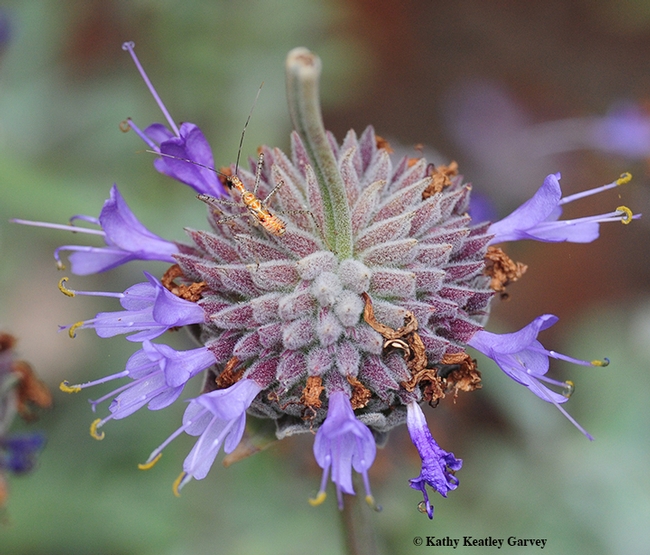
Can you find the nymph assassin bug on this Cleveland sage? This bug belongs to the genus Zelus. (Photo by Kathy Keatley Garvey)
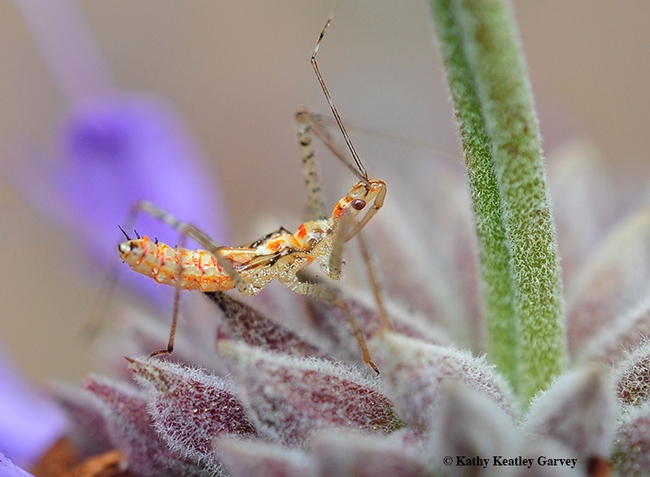
A nymph assassin bug strikes a pose on Cleveland sage. (Photo by Kathy Keatley Garvey)
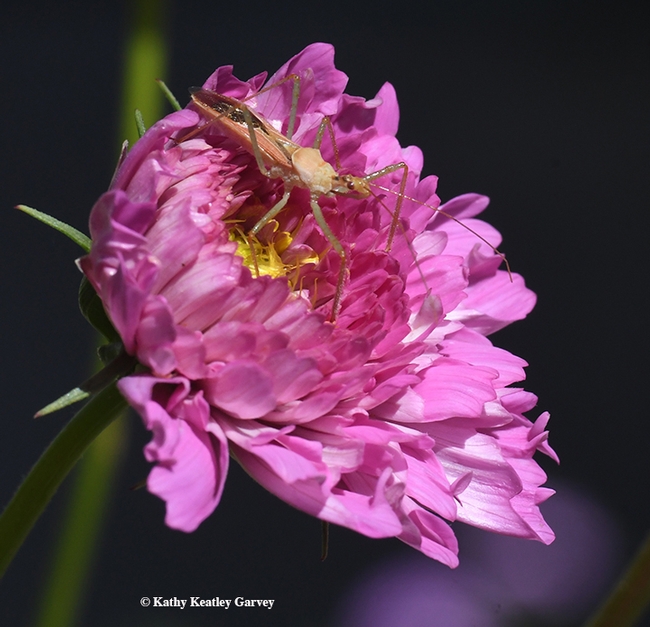
This adult assassin bug, Zelus renardii, is ready to ambush prey on a double cosmos blossom. (Photo by Kathy Keatley Garvey)
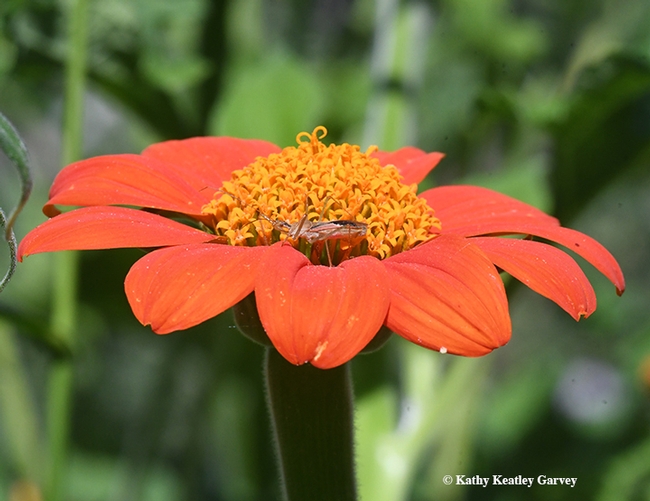
This adult assassin bug lurks almost unnoticed on a Mexican sunflower, Tithonia. (Photo by Kathy Keatley Garvey)
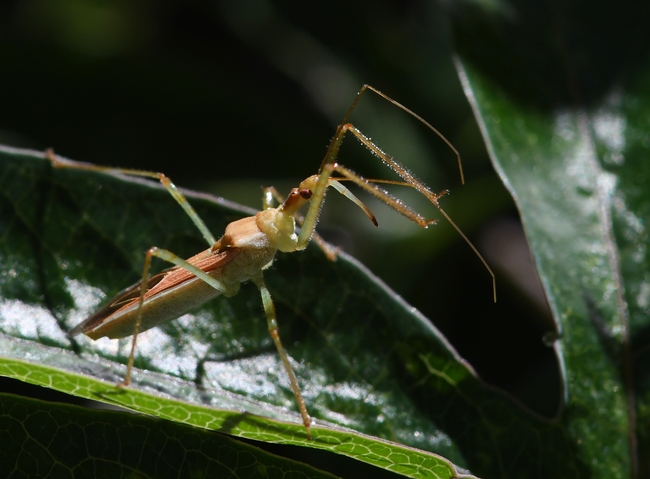
The predator: the assassin bug. This one is lying in wait on a nectarine leaf. (Photo by Kathy Keatley Garvey)
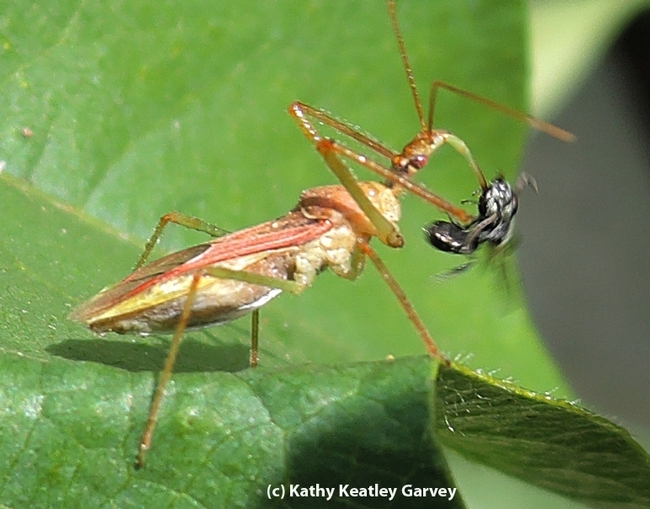
Gotcha! An assassin bug spears a male metallic sweat bee. (Photo by Kathy Keatley Garvey)